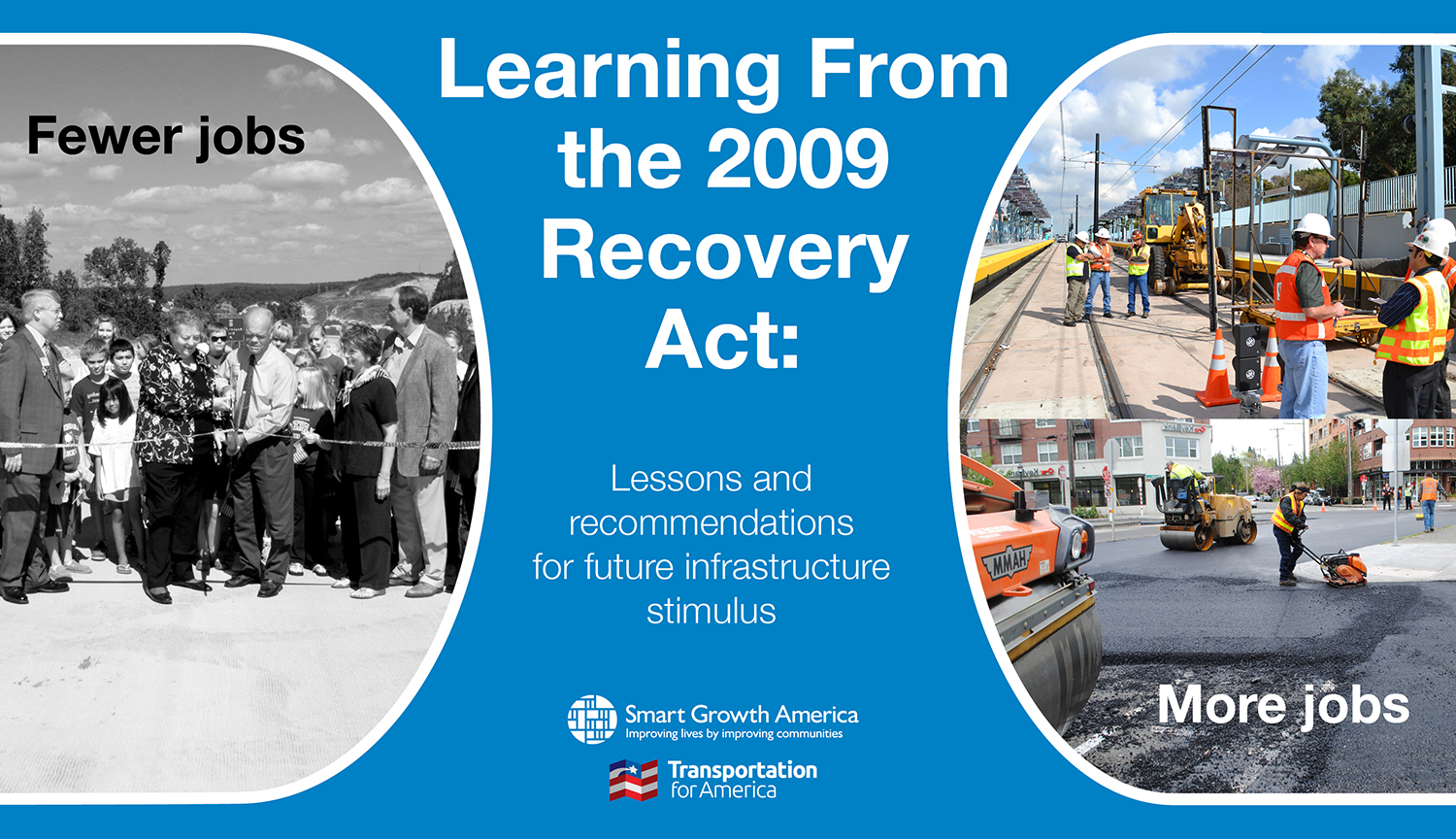 In his State of the Union address, President Obama called on Americans to “out-innovate, out-educate, and out-build the rest of the world” to win the future. To rebuild America, he said, we will aim to put “more Americans to work repairing crumbling roads and bridges.”
In his State of the Union address, President Obama called on Americans to “out-innovate, out-educate, and out-build the rest of the world” to win the future. To rebuild America, he said, we will aim to put “more Americans to work repairing crumbling roads and bridges.”
A new report from Smart Growth America analyzes states’ investments in infrastructure to determine whether they made the best use of their spending based on job creation numbers. Recent Lessons from the Stimulus: Transportation Funding and Job Creation evaluates how successful states have been in creating jobs with their flexible $26.6 billion of transportation funds from the American Reinvestment and Recovery Act (ARRA). Those results should guide governors and other leaders in revitalizing America’s transportation system, maximizing job creation from transportation dollars and rebuilding the economy.
According to data sent by the states to Congress, the states that created the most jobs were the ones that invested in public transportation projects and projects that maintained and repaired existing roads and bridges. The states that spent their funds predominantly building new roads and bridges created fewer jobs.
As Newsweek’s David A. Graham explains, investments in transportation create jobs in the short term and longer term economic prosperity too:
Injecting money into transportation projects, the thinking goes, is an especially potent jobs-creation tool because it not only puts construction workers and contractors to work quickly, it also lays the groundwork for future economic growth and development. Obama predicted the transportation money alone would put hundreds of thousands of workers on the job.
As “Recent Lessons from the Stimulus” explains, not all transportation projects reap these benefits equally:
[S]tates spent more than a third of the money on building new roads—rather than working on public transportation and fixing up existing roads and bridges. The result of the indiscriminate spending? States missed out on potentially thousands of new jobs—and bridges, roads, and overpasses around the country are still crumbling. Meanwhile, the states that did put dollars toward public transportation were richly rewarded: Each dollar used on transit was 75 percent more effective at putting people to work than a dollar used for highway work.


